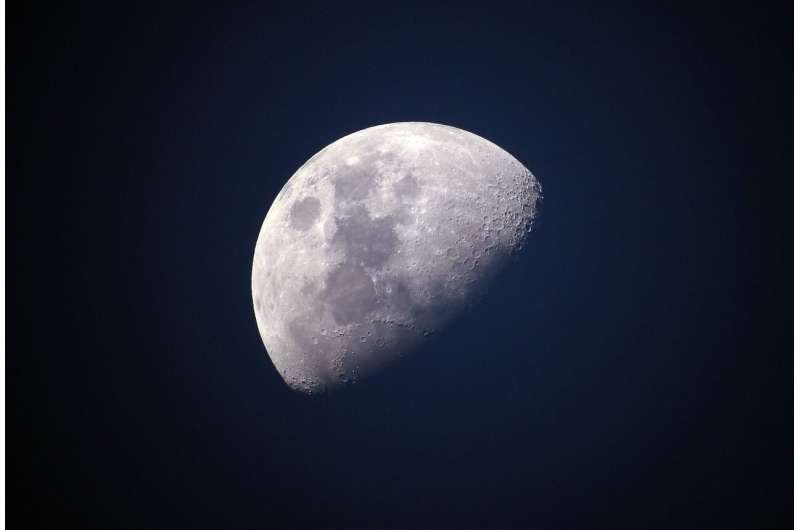But using modern in situ analytical techniques, we show that the isotope ratios of the volcanic glasses actually have a fairly wide range, and those variations can be explained by events early in lunar history."
The sulfur signature of interest is the ratio of the "heavy" sulfur-34 isotope to the lighter sulfur-32. Initial studies of lunar volcanic samples found that they uniformly leaned toward the heavier sulfur-34. The nearly homogeneous sulfur isotope ratio was in contrast with large variations in other elements and isotopes detected in the lunar samples.
This new study looked at 67 individual volcanic glass samples and their melt inclusions—tiny blobs of molten lava trapped within crystals inside the glass. Melt inclusions capture the lava before sulfur and other volatile elements are released as gas during eruption—a process called degassing. As such, they offer a pristine picture of what the original source lava was like. Using the SIMS at the Carnegie Institution for Science, Saal with his colleague, the late Carnegie scientist Eric Hauri, were able to measure the sulfur isotopes in these pristine melt inclusions and glasses, and use those results to calibrate a model of the degassing process for all the samples.
"Once we know the degassing, then we can estimate back the original sulfur isotope composition of the sources that produced these lavas," Saal said.
Those calculations revealed that the lavas had been derived from different reservoirs within the interior of the Moon with a wide range of sulfur isotope ratios. The researchers then showed that the range of values detected in the samples could be explained by events in the Moon's early history.
The lighter isotope ratio in some of the volcanic glasses, for example, is consistent with the segregation of the iron core from the early molten Moon. When an iron core separates from other material in a planetary body, it takes a bit of sulfur with it. The sulfur that's taken tends to be the heavier sulfur-34 isotope, leaving the remaining magma enriched in the lighter sulfur-32.
"The values we see in some of the volcanic glasses are fully consistent with models of the core segregation process," Saal said.
The heavier isotope values can be explained by the further cooling and crystallization of the early molten Moon. The crystallization process removes sulfur from the magma pool, producing solid reservoirs with heavier sulfur-34. That process is the likely source of the heavier isotope values found in some of the volcanic glasses and basaltic rocks returned from the Moon.
"Our results suggest that these samples record these critical events in lunar history," Saal said. "As we keep looking at these samples with newer and better techniques, we keep learning new things."
More work needs to be done—and more samples need to be analyzed—to fully understand the sulfur isotopic composition of the Moon, Saal says. But these new results help to clarify long-standing questions about the composition of the Moon's interior, and they bring scientists one step closer to understanding the formation and early history of the Moon.
Explore further



